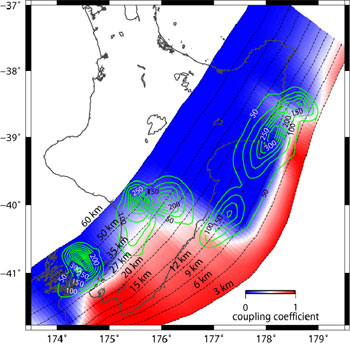Slow slip events, interseismic locking, and rapid forearc rotation
at the Hikurangi subduction margin, New Zealand
By:
Dr. Laura Wallace
GNS Science, New Zealand
| When: | Friday, March 25, 10:30 a.m. to 11:30 a.m. Join us for coffee beginning at 10:00 a.m. |
| Where: | Seminar Conference Room, 10100 Burnet Road, Bldg 196-ROC, Austin, Texas 78758 |
| Host: | Sean Gulick, UTIG |

Abstract
The Hikurangi subduction margin, New Zealand, accommodates westward subduction of the Pacific Plate beneath the Australian Plate offshore the eastern North Island. GPS studies reveal that this subduction margin is characterized by strong temporal and spatial variations in tectonic deformation processes. Over the long-term, GPS and geological data show that the Hikurangi forearc rotates clockwise 3-4 degrees/Myr relative to the Pacific and Australian Plates, leading to back-arc rifting in the central North Island.
On shorter time frames, geodetic data reveal that a large area of the Hikurangi subduction interface is interseismically coupled, along which stress could be released in future great earthquakes. Continuously operating GPS have also allowed documentation of numerous slow slip events at the down-dip transition from interseismic coupling to aseismic creep at the Hikurangi margin. In this talk, I will give an overview of my recent research investigating this rich array of deformation processes, and the implications for controls on plate boundary zone kinematics and for the mechanisms behind subduction thrust behaviour.
At right: Distribution of interseismic coupling on the subduction interface (red is 100% coupling, blue is aseismic creep), and cumulative slip in slow slip events at the Hikurangi margin since 2002 (contours in mm).




